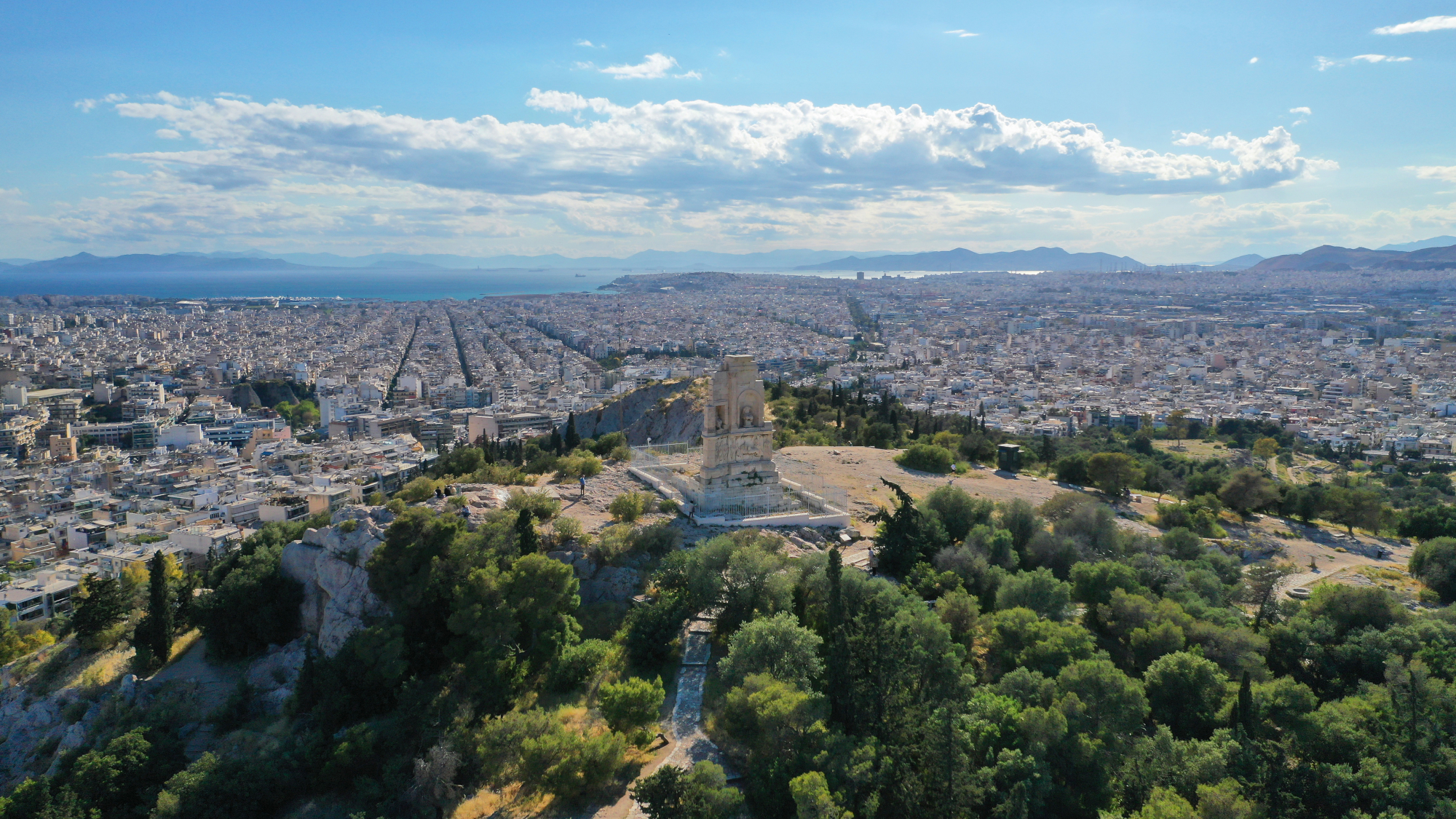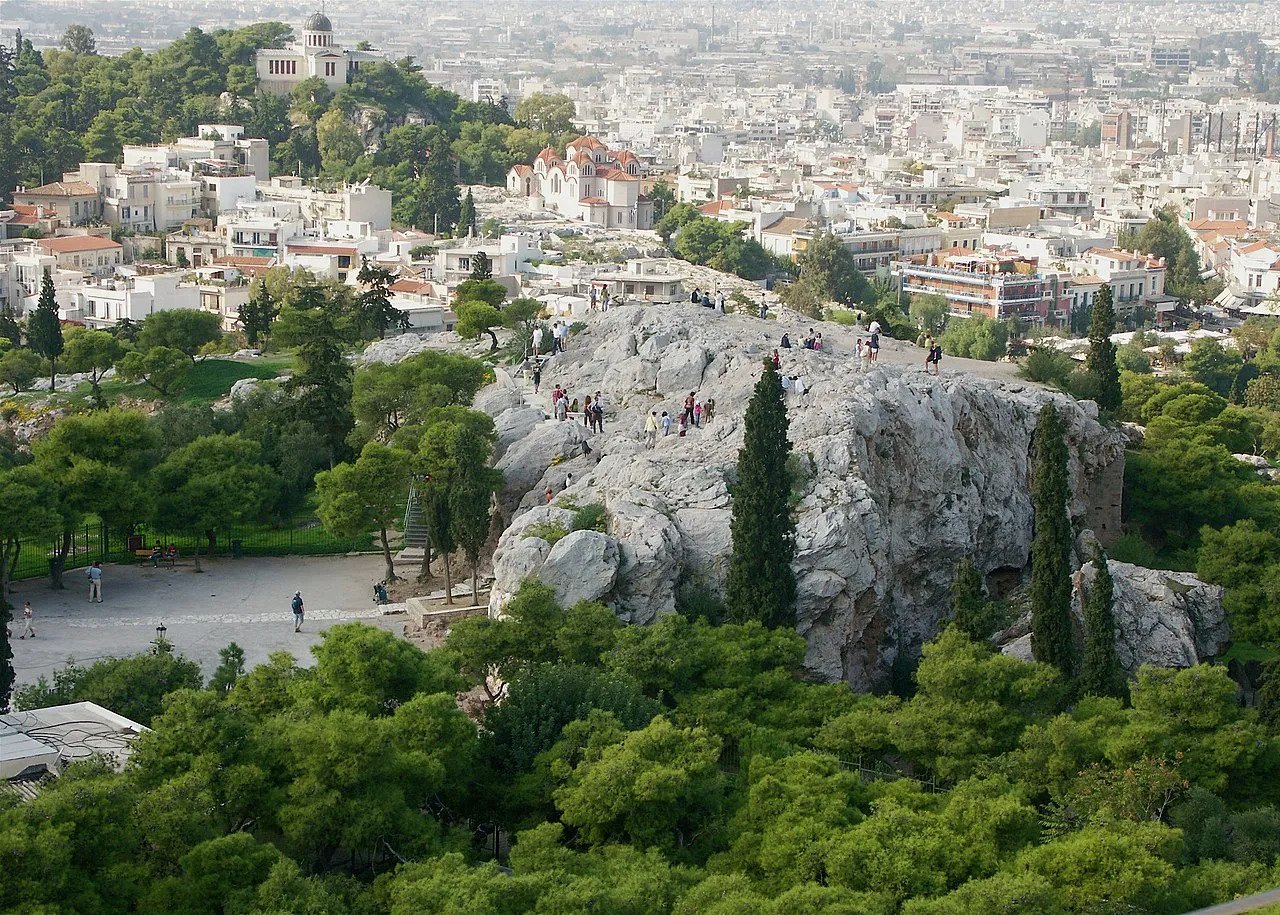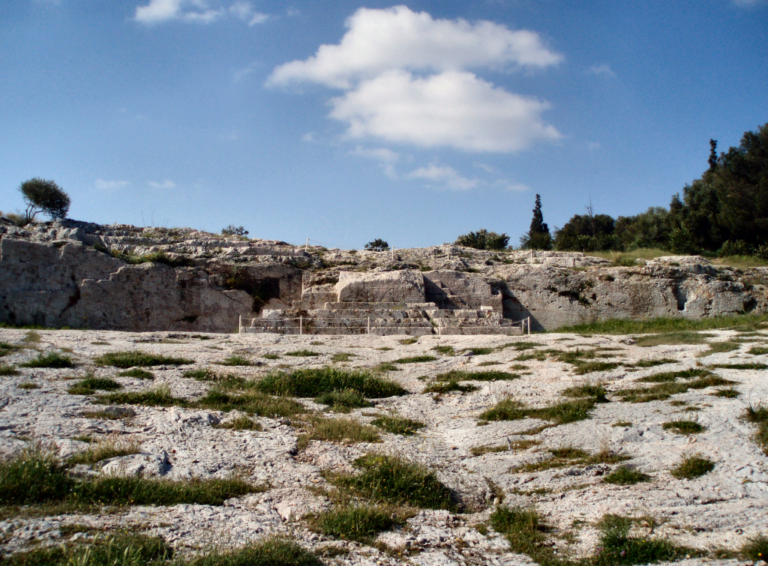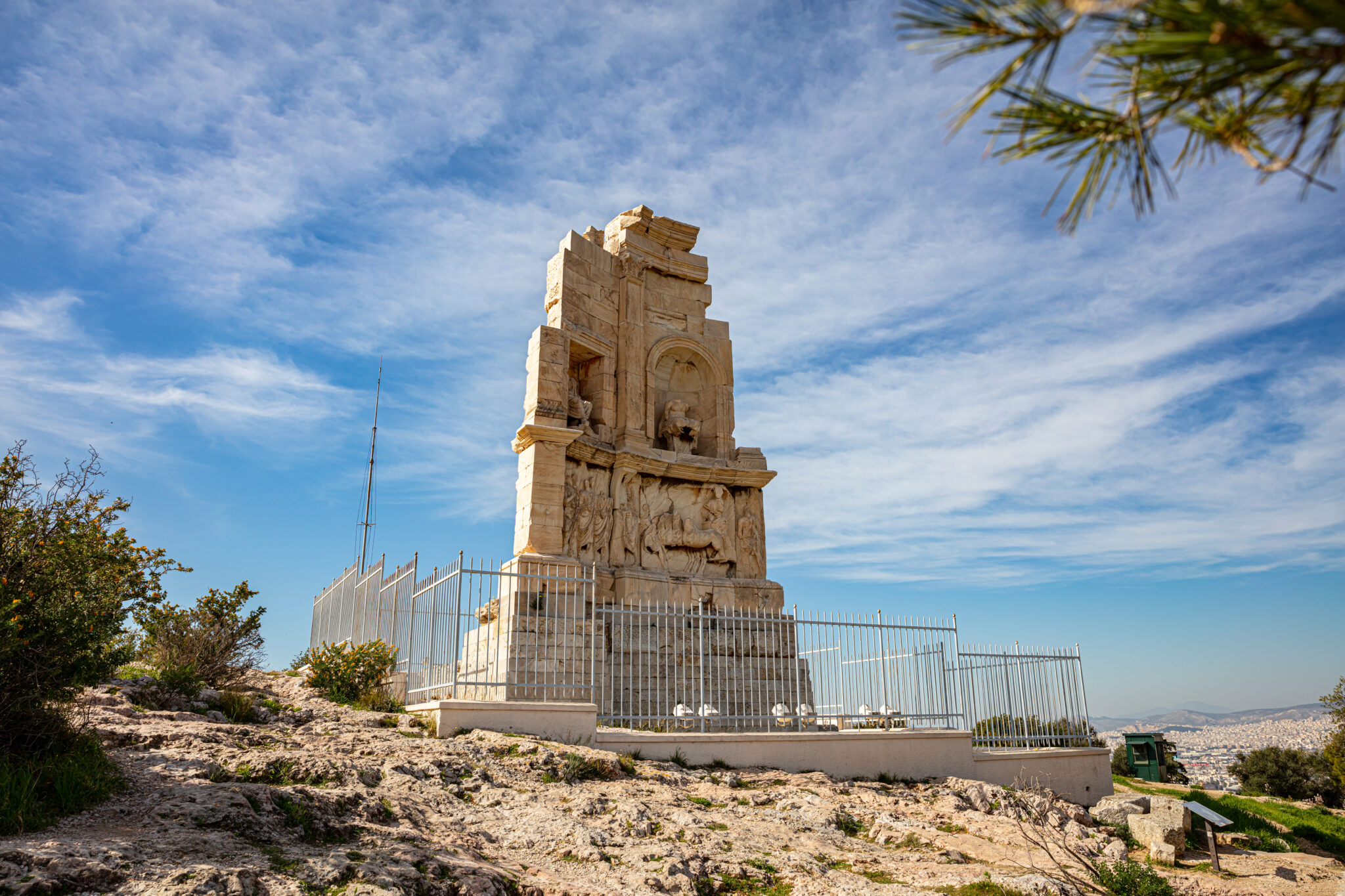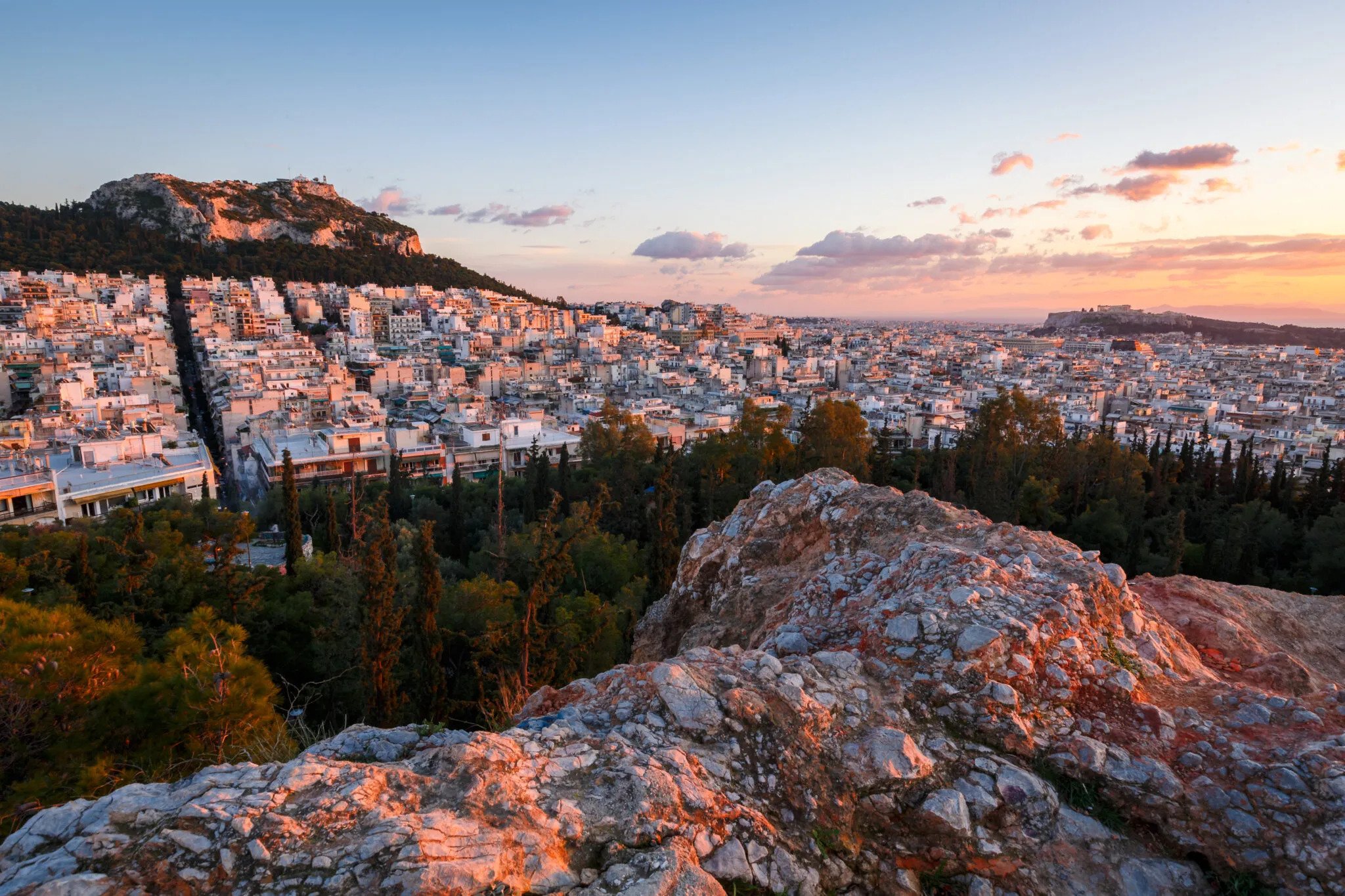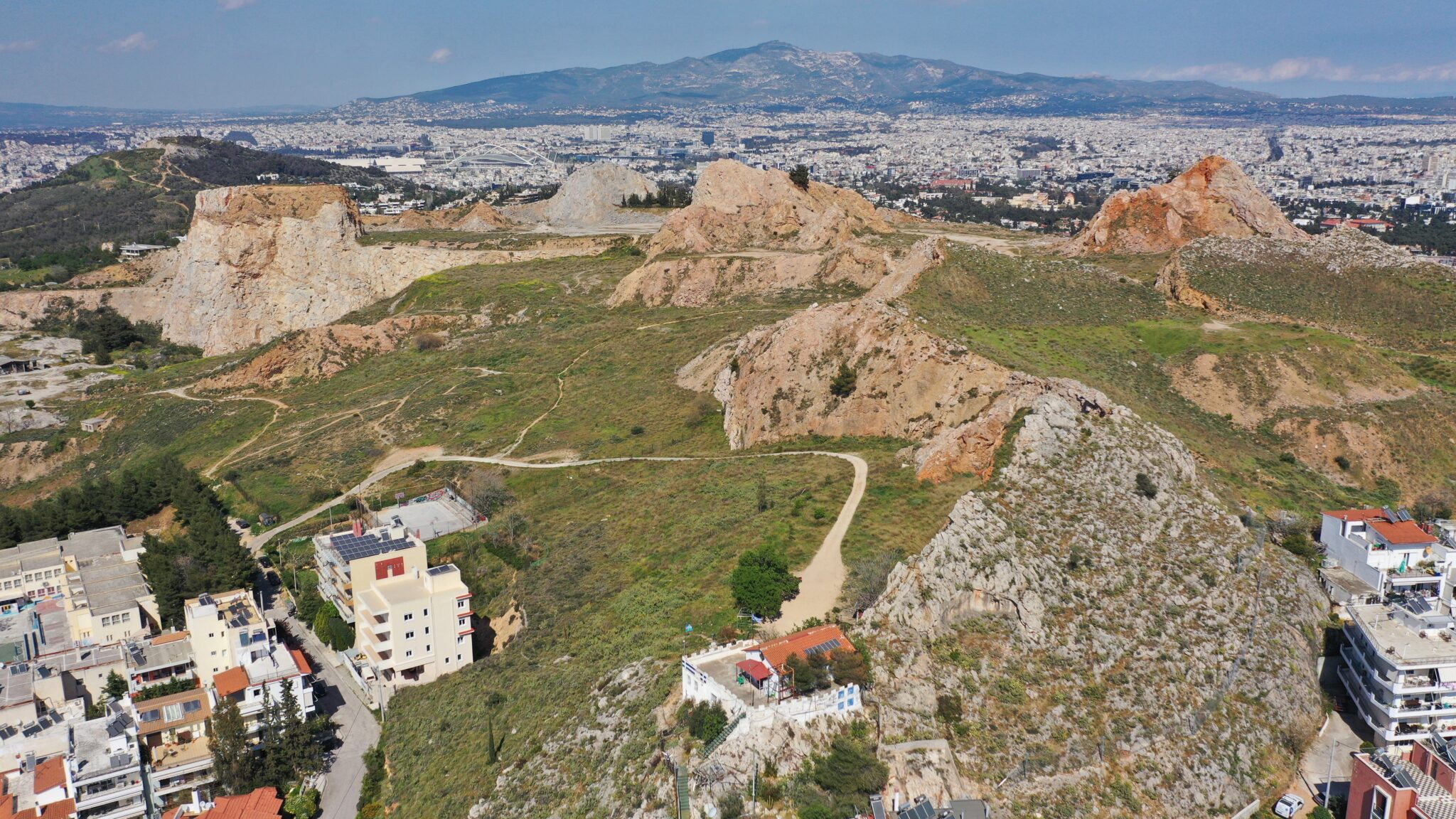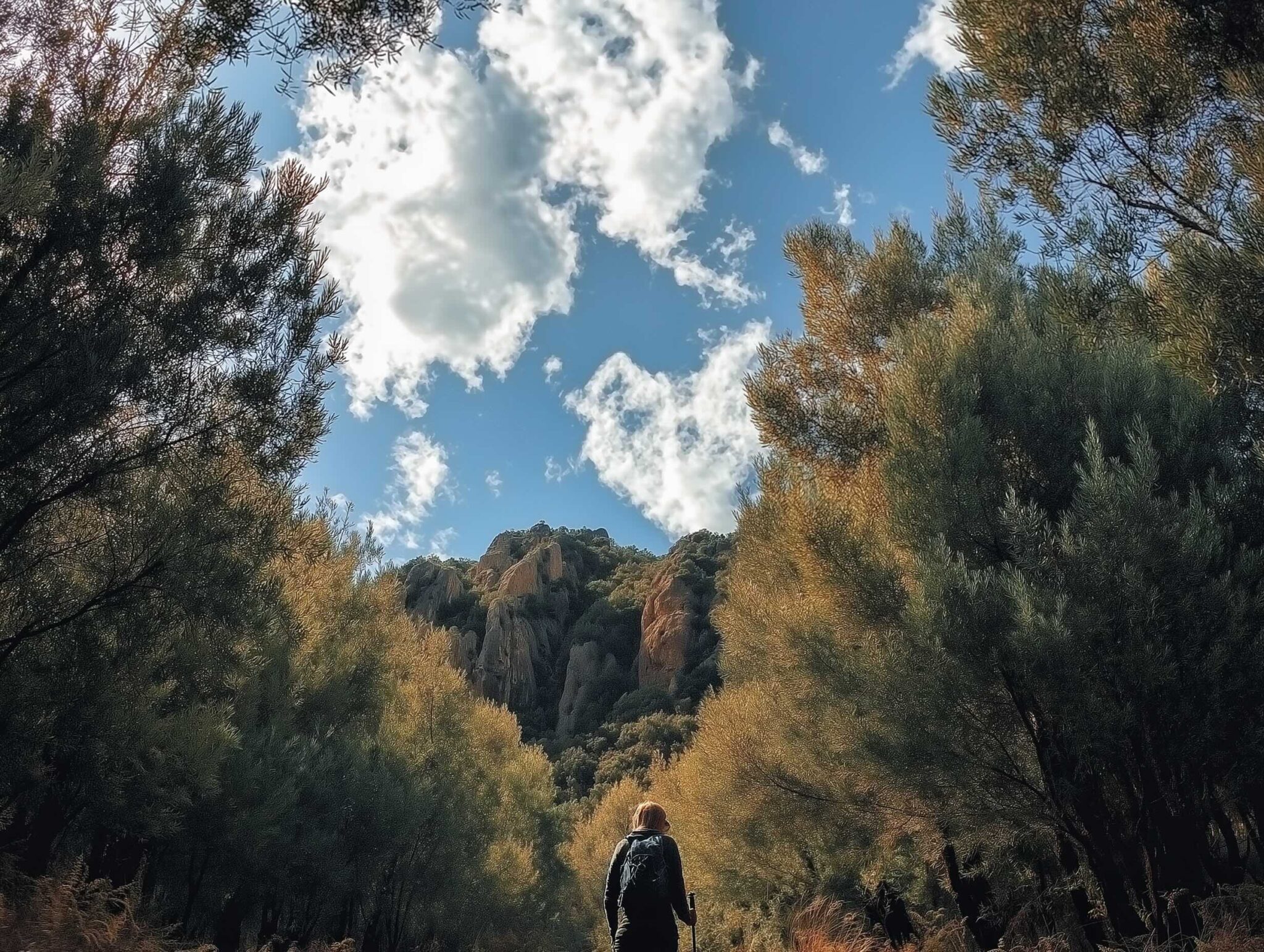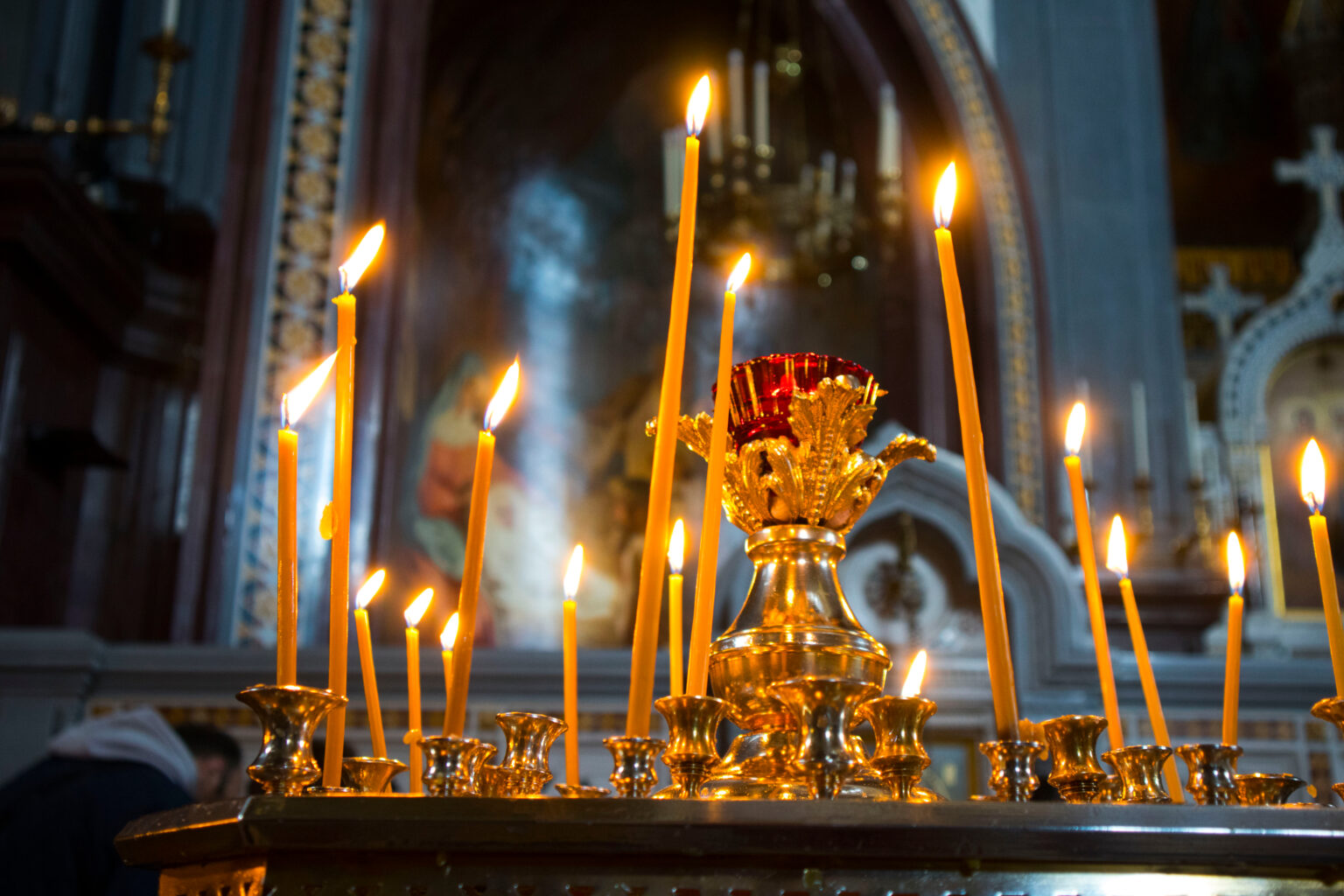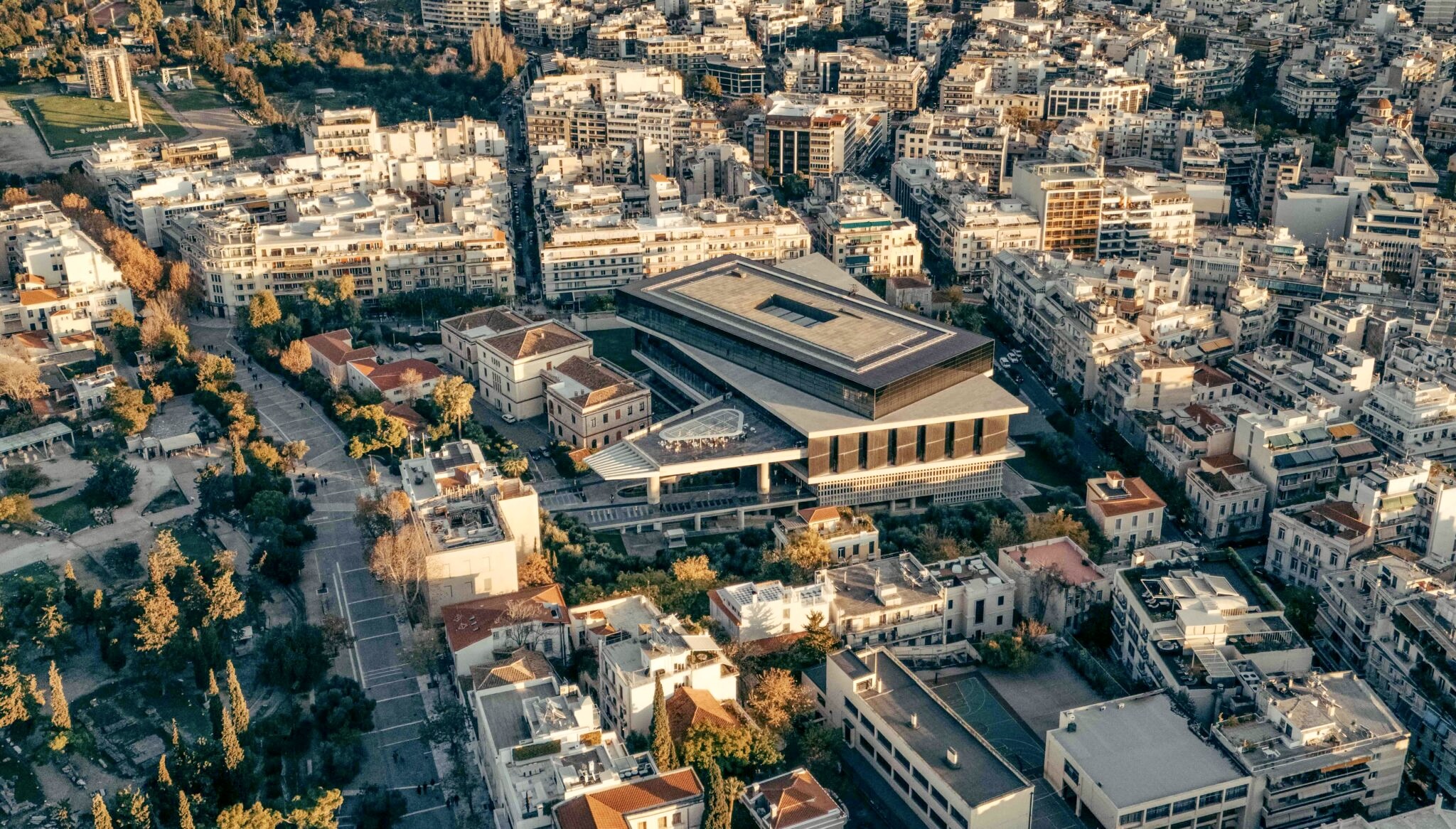While Athens may have lost its cherished rivers, its hills remain, enriching the city’s topography. These hills offer breaths of fresh air, threads of culture, and are always a splendid choice for a wander right in the heart of the city.
The iconic Acropolis Hill serves as a focal point. To its north rises Lycabettus Hill, crowned by the renowned Chapel of St. George, with the Chapel of the Holy Isidores slightly further down. At an old quarry sits the newly reopened Lycabettus Theatre, which during balmy summer evenings, will once again serenade us with melodies. Both children and adults always enjoy the ascent by cable car, or even by the picturesque trails.
At Areopagus and the Observatory
To the northwest of the Acropolis, a rocky hill standing at 115 metres high was, in ancient times, the operating ground for the judicial body, particularly the Council of the Areopagus. It was on this hill that, in 51 AD, Apostle Paul first proclaimed Christianity to the Athenians. A spot with an impeccable view of the Parthenon and Lycabettus hill.
Adjacent to the Hill of the Nymphs or Observatory, stands the country’s oldest research institution, the National Observatory. This neoclassical edifice was designed by Theophil Hansen. The historical telescopes are accessible to all those who remember to gaze up at the sky. In antiquity, at the hill’s peak, there was a sanctuary dedicated to the Nymphs, guardians of vegetation and fertility. The grand Temple of Aghia Marina, on the hill’s east, was built based on plans from Ernst Ziller.
Pnyx: the Landmark of Athenian Democracy
In the neighbouring Pnyx hill, the People’s Assembly convened, debating on all important matters of Athenian democracy. Here, on this sacred soil, luminaries and laypeople spoke, pivotal decisions were made, and momentous speeches were delivered. On the northern slope of the hill, remnants of homes, cisterns, and stairways of the Ancient Demos can still be found. Nearby stands Ag. Demetrius Loubardiaris, truly one of Athens’ most enchanting churches. Its visionary architect, Dimitris Pikionis, undertook extensive conservation work, using parts of ancient marbles and other structures from the palimpsest of Athenian history to build it, and adding wonderful cobblestone paths lined by pine and olive trees in the surrounding area, leaving an indelible mark upon the area.
The Monument of Philopappos
Gaius Julius Antiochus Philopappos, a prince from Commagene in Syria and a benevolent patron of Athens, erected his funerary monument, bestowing his name upon the hill and the surrounding area. For lovers of Athens, this monument stands as a beacon, keeping Philopappos’ legacy alive for over two millennia. Crafted between 114-116 AD from white Pentelic marble, it stands atop a 3-metre base. Over the ages, the monument has faced alterations, but in 1957, archaeological investigations revealed a burial chamber within, suggesting its dual role as a mausoleum.
From Skouze Hill to Strefi Hill
Two iconic hills of Athens, popular for strolls and introspection. Skouze Hill, located near Sepolia, is crowned by the church of Ag. Emilianos. Its name harkens back to a time before the Greek War of Independence when the Skouzé family owned vast stretches of the land. Another eminent elevation is Strefi Hill, nestled between Exarcheia and Neapoli. This hill too, owes its name to a family, the Strefis, who once owned significant tracts in the vicinity. In the 19th and 20th centuries, a quarry operated here, significantly altering the hill’s topography. However, after the conclusion of its operations in 1920, and having already been under state ownership since 1914, afforestation began. Today, it belongs to the Municipality of Athens and is graced by an open-air theatre, a basketball court, a children’s playground, and a charming taverna where you can stop for meze.
Tourkovounia
The Tourkovounia mountain range is an intriguing geographical division that splits Athens, offering its slopes as a canvas upon which beautiful neighbourhoods, with distinctive city views, have been painted. Places such as Galatsi, Filothei, Psychiko, along with parts of Athens like Kypseli, Polygono, and Girokomeio, touch these hills. The range’s ancient name was Lykovounia.
Its modern name, Tourkovounia, has historical roots; it’s believed to either stem from a Turkish cemetery once located there or, according to another version, because it was where the troops of the Turkish Pasha Omar camped before Athens was liberated. From 1937 to 1976, the area was home to quarries, which significantly transformed the landscape. Today, one can find delightful spots for walks, and within the Attiko Alsos, there’s a restaurant and café awaiting visitors.



